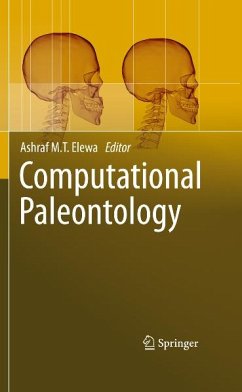
Computational Paleontology (eBook, PDF)
Versandkostenfrei!
Sofort per Download lieferbar
112,95 €
inkl. MwSt.
Weitere Ausgaben:

PAYBACK Punkte
56 °P sammeln!
Computational paleontology is simply a term applied to using computers and its facilities in the field of paleontology. However, we should be exactly precise in describing the term through explaining the main themes of this motivating and attractive scientific field.
The uppermost aim of this book is to explain how computation could be competent in fetching fossils to life and the past to present. Computers for paleontologists save time and costs, interpret mysterious events precisely and accurately, visualize the ancient life definitely and undeniably.
The uppermost aim of this book is to explain how computation could be competent in fetching fossils to life and the past to present. Computers for paleontologists save time and costs, interpret mysterious events precisely and accurately, visualize the ancient life definitely and undeniably.
Dieser Download kann aus rechtlichen Gründen nur mit Rechnungsadresse in A, B, BG, CY, CZ, D, DK, EW, E, FIN, F, GR, HR, H, IRL, I, LT, L, LR, M, NL, PL, P, R, S, SLO, SK ausgeliefert werden.













